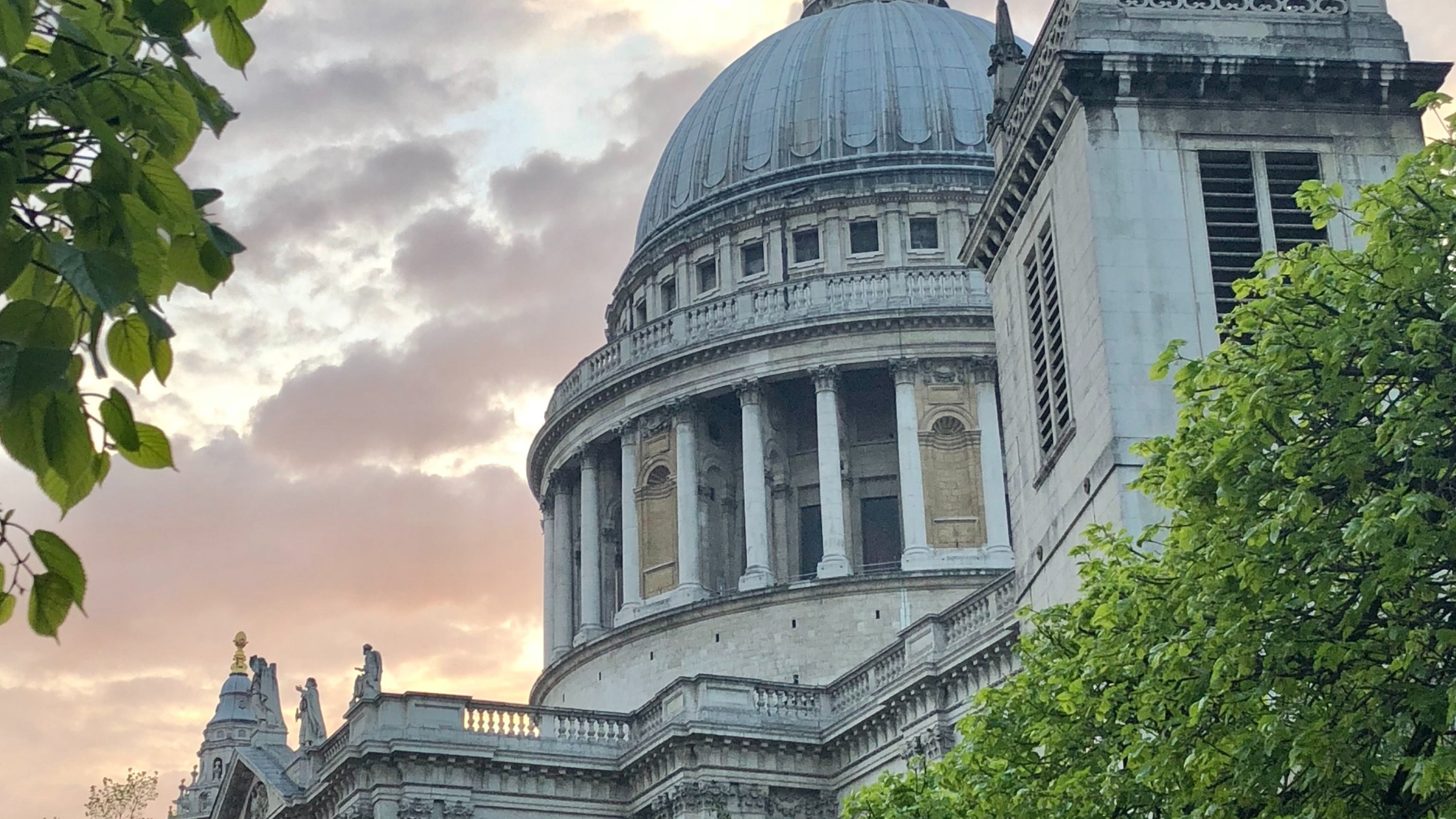Creativity That Aims for Eternityنموونە

THE FULFILLMENT OF ETERNITY-AIMED CREATIVITY

As a young girl, I watched from my living room TV, Lady Di walk down the aisle of St. Paul’s Cathedral to marry Prince Charles. It seemed like the stuff of fairy tales. Decades later, I stood inside the same colossal nave and beheld the faraway place I had envisioned from my childhood. TV had provided me with a shadow of the reality of what St. Paul’s looked like, but when I was there in person, I no longer needed the shadow, I beheld it with my own eyes.
Cathedrals had many functions in medieval Europe. They were meant to inspire, educate, and provide a magnificent place where people could meet with God. Many of the cathedrals we see today drew their inspiration from the first “official” meeting place between God and man, the gold-laden representation of Heaven on Earth: the tent of meeting or the tabernacle.
After giving Moses the Ten Commandments and the Law, God wanted a tabernacle to be built, where He would meet and dwell with His people. God had chosen a man to do the work, and his name was Bezalel.
“Then Moses said to the Israelites, “See, the Lord has chosen Bezalel son of Uri, the son of Hur, of the tribe of Judah, and he has filled him with the Spirit of God, with wisdom, with understanding, with knowledge and with all kinds of skills—to make artistic designs for work in gold, silver, and bronze, to cut and set stones, to work in wood and to engage in all kinds of artistic crafts” (Exodus 35:30-33).
This is the first mention of the Spirit being given to anyone in the Scripture. Isn’t it remarkable that it was first given to a craftsman? Often we think art is “extra.” It’s not really necessary, but a nice bonus if you have the time or resources to enjoy it. But the story of Bezalel reminds us that art and craftsmanship are not extra but an integral part of our worship. Bezalel had a unique level of artistic genius for the work God gave him to do, but even if we’re not endowed with as much skill as Bezalel, we can still create and reflect our craft back to our Creator.
The builder and architect of St. Paul’s Cathedral, Sir Christopher Wren said, “Architecture aims at eternity.” He saw that art wasn’t just for man, it was for God’s glory.
Does your art aim at eternity?
Someday the need for our artistic representations will disappear because we'll see the Son of Man face-to-face. Shadows and types will be unnecessary. But until that time, we should be busy filling the earth with art that reflects the beauty and glory of God. That is the highest aim of art, and this is our spiritual act of worship.
دەربارەی ئەم پلانە

Christopher Wren, the mastermind architect behind St. Paul’s Cathedral in London, said that “Architecture should aim for eternity.” Our creative efforts, whatever they may be, should reflect the glory of our Creator, and point the hearts and minds of others towards eternity. This is a high calling for creatives. In this short series, we’ll look at the frustration, framework, and fulfillment that comes when we point our art ever upwards.
More
پلانە پەیوەستەکان

Letters to the 7 Churches: A Revelation Study

My Hope

Wives Who Win for Christ: Influencing Your Unsaved Husband Through Discipleship by Dr. Treal Ravenel

The Bible for Young Explorers: Matthew

Living the Dream: A Devotional for Students Through the Life of Joseph

Perversion From a Biblical Perspective

Everyone Sharing the Gospel Everywhere // Gospel X - Multiplying the Gospel

Sorry Not Sorry

Praying for Teen Girls: Partnering With God for the Heart of Your Daughter
